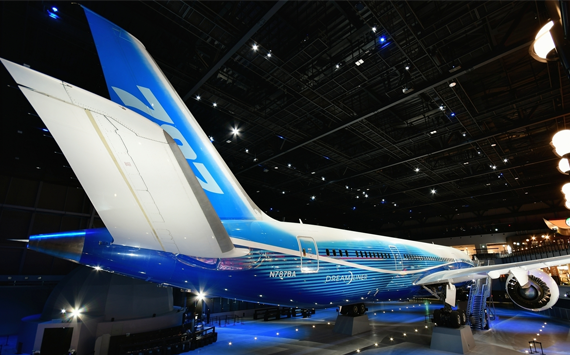
Production problems
Boeing Co (NYSE:BA). is likely to face additional delays in delivering its products to customers due to the discovery of a manufacturing defect on its popular 787 Dreamliner wide-body aircraft, The Wall Street Journal wrote.
By the manufacturer's own calculations, it will take at least three weeks to fix a problem with the forward pressure bulkhead that affects the aircraft's plating, which cannot but affect customers airlines eagerly awaiting the new Dreamliner airliners amid the traditionally busy summer travel season.
But such a pause is not the first this year for Boeing: at the end of May it was forced to suspend the transfer of Dreamliner airliners to customers after the US federal aviation safety authorities refused to approve its proposed method of testing the aircraft for manufacturing defects.
And while there has been no comment from the aircraft manufacturer so far, one informed source said Boeing is expected to reduce the number of aircraft it produces each month until it resolves its quality problems.
The US Federal Aviation Administration (FAA) said the recently discovered quality problem in the Dreamliner does not pose an immediate threat to flight safety, but that Boeing and FAA engineers are nonetheless aware that such a defect could cause premature fatigue of a key part of the aircraft's design
At the same time, the regulator will have to determine whether or not to require modifications to the 787s already in service.
Due to the 5-month supply interruption: from last fall to this spring due to fixing problems in the aircraft, the company has already accumulated about 100 aircraft, many of which it had hoped to deliver to customers by the end of the year.
Both of these forced pauses have added to the already difficult situation of the US aerospace giant, which has struggled with various problems in recent years. To make matters worse, they are blocking a key source of its revenue generation while Boeing tries to resolve the twin crises resulting from two fatal crashes with its 737 MAX aircraft in late 2018 and early 2019, as well as the COVID-19 pandemic hitting demand for the aircraft.







